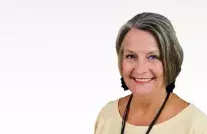Cradle to Grave: Oral Pathology Through the Life Span

Cradle to Grave: Oral Pathology Through the Life Span
03/26/24- 06:00pm CST
Sherri M. Lukes, RDH, MS, FAADH
3737 West 127th Street, Alsip, IL
1.5 CE
FREE!
Every day in dental practices, patients of all ages present with various oral pathologies. This course is an overview of oral pathologic conditions outlined according to those affecting children/adolescents, adults and geriatric clients. It includes both common and uncommon conditions presented in an engaging format. Many of the images and cases presented are from Ms. Lukes’ own personal collection of lesion images accumulated over 43 years as a dental hygienist, a 28-year teaching career and 22 years of mission work. Etiology, clinical appearance, and treatment options are included for each lesion/ condition. Comparison images for inclusion in the differential diagnosis will also be presented and discussed. This course can serve as an excellent update for seasoned hygienists/dentists or a relevant review for new graduates entering the field.
Instructional Objectives:
Upon completion of the session participants will be able to:
- Explain the etiology of various oral pathologic conditions affecting children, adolescent, adult and geriatric clients
- Describe the clinical appearance of various oral pathologic conditions
- List treatment options for various oral pathologic conditions
- Explain the importance of current oral pathology knowledge when conducting intra/extra-oral exams
- Compare/contrast lesions that can be considered in a differential diagnosis for each pathologic entity

